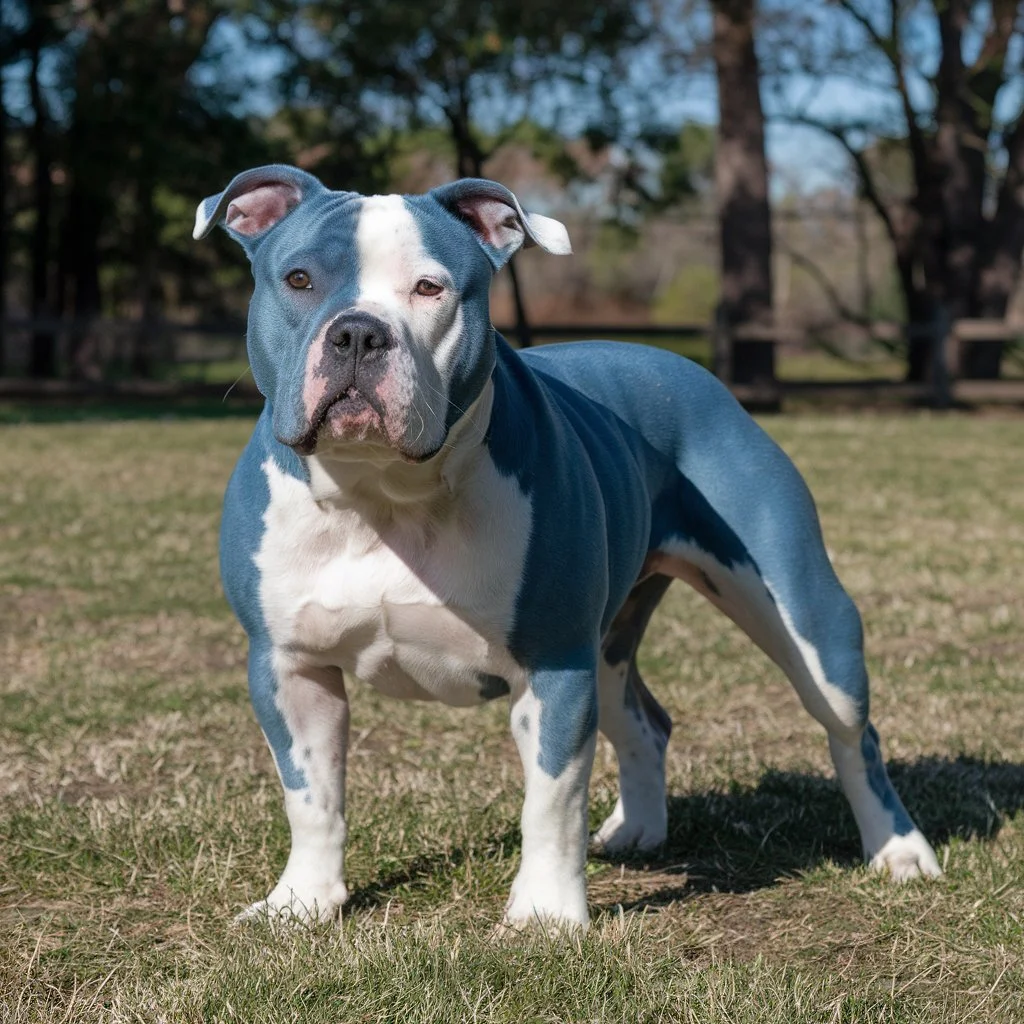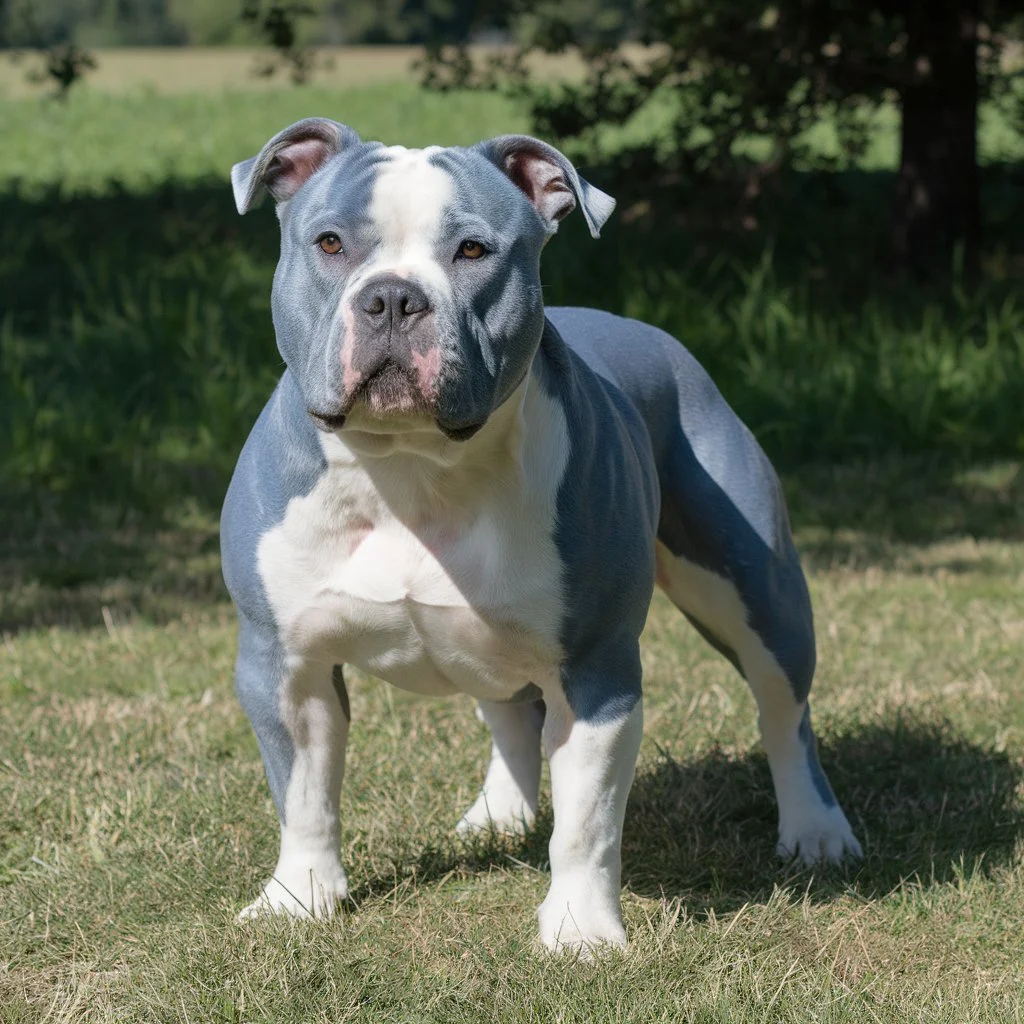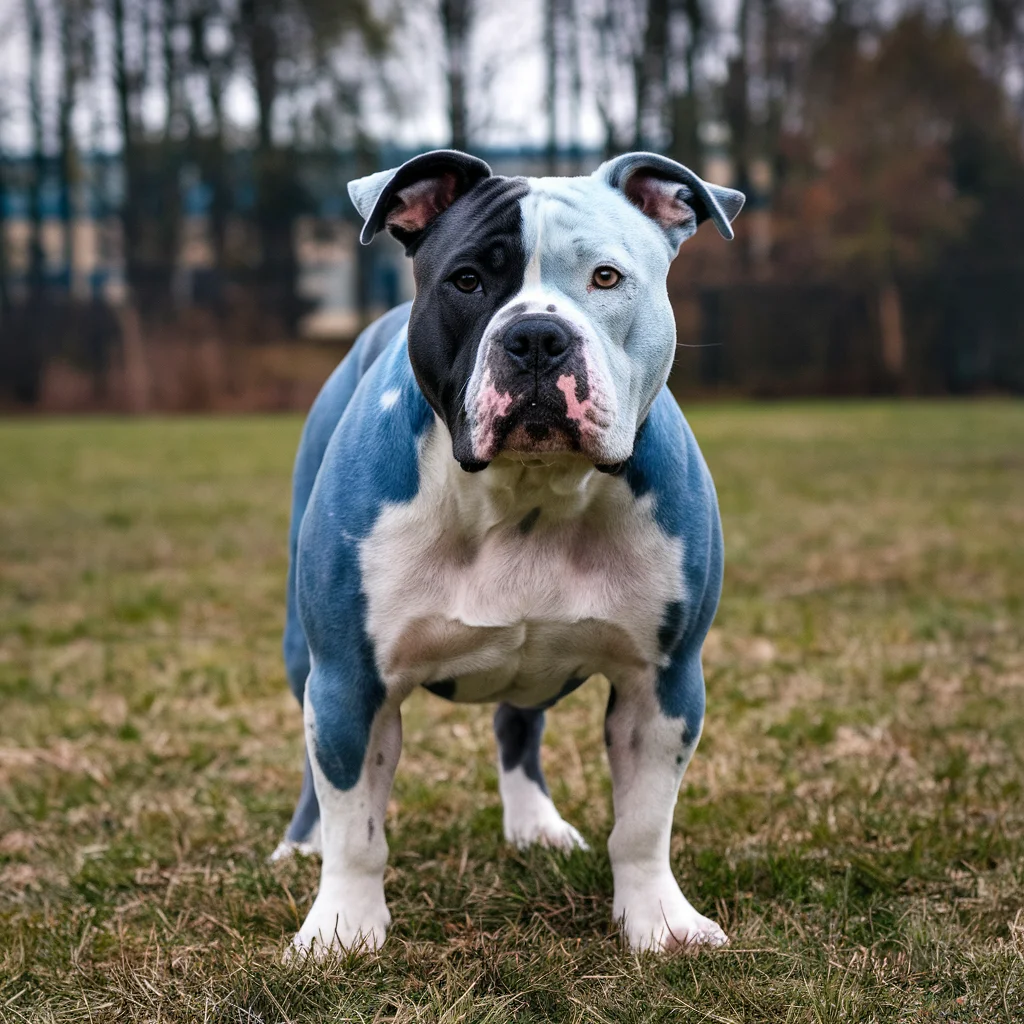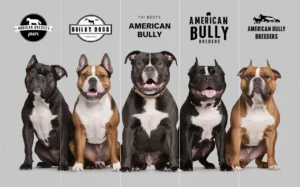The American Bully breed captivates dog enthusiasts not just with its muscular build and affectionate temperament, but also with its stunning array of coat colors. Each color not only contributes to the dog’s unique appearance but can also indicate underlying health issues.
In this blog post, we will explore 33 American Bully colors in detail, shedding light on their significance and any potential health implications. Whether you’re a current owner, a potential adopter, or simply curious about this breed, understanding the correlation between color and health can guide you in making informed decisions.
Overview of American Bully Colors

Definition of Colors
American Bullies exhibit a vast palette of colors ranging from solid hues to intricate patterns. The coloration is the result of specific genetic combinations that influence the pigments in their fur. Understanding these variations is essential for both aesthetic appreciation and health awareness.
Genetics of Coat Colors
The genetics behind American Bully coat colors is complex. Each color and pattern is determined by various genes that control pigmentation. Breeders often select for specific traits, which can unintentionally lead to health issues if not managed properly.
Key genetic factors include:
- Eumelanin: The pigment responsible for black and blue colors.
- Phaeomelanin: The pigment responsible for fawn and red shades.
- Modifiers: Genes that can affect the intensity and distribution of these pigments.
Understanding these genetic components can help predict not just the color but also potential health issues that may arise in American Bullies.
The First Coat Color Group

Solid Colors
Solid colors are the most straightforward variations, consisting of a single hue without any patterns. While aesthetically pleasing, some solid colors can be more susceptible to health problems.
Solid Color American Bullies
Black American Bully
The black American Bully is one of the most classic looks in the breed. With a sleek, glossy coat, they are undeniably striking. However, this color can sometimes be associated with certain skin issues, such as:
- Allergies: Increased susceptibility to environmental allergens.
- Skin Conditions: Some black Bullies may experience conditions like follicular dysplasia.
Blue American Bully
The blue American Bully has gained popularity for its unique slate-gray coat. Unfortunately, this color is often linked to specific health issues, including:
- Color Dilution Alopecia: A genetic condition that causes hair loss and skin problems.
- Hypotrichosis: An abnormality in hair growth, leading to sparse fur.
Sable Fawn American Bully
Sable fawn Bullies showcase a beautiful blend of colors, often with a darker overlay on a fawn base. While visually appealing, these dogs can sometimes face:
- Skin Allergies: Increased sensitivity to allergens due to their coat type.
- Digestive Issues: Some may have stomach sensitivities that lead to dietary restrictions.
Blue Fawn American Bully
This striking color features a blue base with fawn highlights. Health implications associated with blue fawn Bullies often mirror those of their blue counterparts:
- Skin Allergies: More prone to environmental allergens.
- Dilution Issues: Potential for coat and skin health concerns.
Red Fawn American Bully
Red fawn Bullies boast a warm, rich hue. They are generally healthier than some other color variants, but vigilance is still necessary for:
- Skin Conditions: Like all Bullies, they can suffer from skin irritations.
- Joint Issues: Obesity can be a concern if not managed, leading to joint problems.
Reverse Fawn Brindle
This color features a fawn base with darker stripes. Health issues linked to reverse fawn brindles include:
- Skin Sensitivities: Prone to allergies and skin conditions.
- Ear Infections: Increased risk due to coat type and moisture retention.
Brindle American Bully
Brindle Bullies showcase a stunning striped pattern. While visually captivating, certain health issues are more common in this variety.
Variants of Brindle
- Blue Brindle:
- Health concerns include potential for color dilution-related skin issues.
- Red Brindle:
- This color can also be more prone to allergies.
- Fawn Brindle:
- May experience skin sensitivities and joint issues.
- Striped Brindle:
- Often has similar health concerns as other brindles but can be more visually appealing.
- Liver Brindle:
- Unique due to its liver-colored base, these dogs can be prone to skin conditions.
Cream or Champagne American Bully
This light-colored variant is relatively rare and has fewer health issues compared to darker colors. However, potential concerns include:
- Sun Sensitivity: Their lighter skin can be more susceptible to sunburn.
- Skin Allergies: All Bullies can have allergies, but cream Bullies may have heightened sensitivity.
White American Bully
White American Bullies are often strikingly beautiful but can face unique health challenges:
- Deafness: Some white Bullies may be genetically predisposed to deafness.
- Skin Cancer: Increased risk due to lack of pigmentation.
Mixed Color American Bullies

Mixed color American Bullies display a combination of solid and patterned colors, resulting in a unique appearance. However, certain color combinations may correlate with health issues.
- Health Implications: Mixed colors can be linked to a higher risk of genetic disorders, especially when bred irresponsibly.
- Vigilance Required: Owners of mixed color Bullies should remain aware of potential hereditary health issues, such as skin conditions and allergies.
Rare Color American Bullies
Rare color variants, while visually stunning, often carry significant health risks due to the way they are bred.
Unique Variations
Merle American Bully
Merle patterns can create a striking coat but are often associated with severe health issues:
- Vision Problems: Many merle Bullies suffer from vision impairments.
- Hearing Loss: Higher incidence of deafness in merle-coated dogs.
Albino American Bully
Albino Bullies have a completely white coat and pink eyes. While they are stunning, they often face severe health challenges:
- Extreme Sensitivity: They are prone to sunburn and skin cancer due to lack of pigmentation.
- Hearing Loss: Like merles, many albino dogs face hearing challenges.
Unique Color Markings in American Bullies
Markings can add character to an American Bully’s coat. However, they can also indicate specific health issues.
Types of Markings
- Piebald Markings:
- Piebald Bullies have patches of white and colored fur, which can indicate potential genetic health risks such as:
- Skin Sensitivities: Due to the contrasting pigmentation.
- Piebald Bullies have patches of white and colored fur, which can indicate potential genetic health risks such as:
- Irish Markings:
- Typically involve white markings on the chest and paws. Health issues can include:
- Joint Concerns: Increased risk of joint problems if not properly cared for.
- Typically involve white markings on the chest and paws. Health issues can include:
- Tricolor Markings:
- A combination of three colors. These dogs can face health concerns similar to mixed color Bullies, particularly:
- Genetic Disorders: Associated with color genetics.
- A combination of three colors. These dogs can face health concerns similar to mixed color Bullies, particularly:
American Bully Nose Colors
The nose color of an American Bully can also vary and may be associated with certain health traits.
- Black Nose: Common and generally indicates a healthy dog.
- Blue Nose: Often seen in blue Bullies; however, they may be more susceptible to skin issues.
- Liver Nose: Indicates a liver color variant and can correlate with specific health concerns.
Health Issues Associated with Specific Colors
Understanding the potential health risks associated with specific colors can be crucial for prospective owners. Here’s a breakdown of common health issues linked to various American Bully colors:
| Color Variant | Common Health Issues |
| Black | Skin allergies, follicular dysplasia |
| Blue | Color dilution alopecia, skin conditions |
| Sable Fawn | Skin allergies, digestive sensitivities |
| Blue Fawn | Skin allergies, dilution issues |
| Red Fawn | Skin conditions, obesity-related joint issues |
| Brindle | Allergies, skin conditions |
| Cream/Champagne | Sun sensitivity, skin allergies |
| White | Deafness, skin cancer |
| Merle | Vision problems, hearing loss |
| Albino | Sun sensitivity, hearing loss |
| Mixed Colors | Genetic disorders, skin conditions |
| Piebald Markings | Skin sensitivities |
| Irish Markings | Joint concerns |
| Tricolor Markings | Genetic disorders |
What Is The Rarest Color Bully?
The rarity of certain colors can often come with increased health risks. Among the American Bully colors, merle and albino are considered the rarest. However, due to their unique genetic makeup, they often face the most significant health challenges, particularly relating to vision and hearing.
Conclusion
In conclusion, understanding the various American Bully colors and their potential health implications is crucial for current and prospective owners. While the aesthetic appeal of each color may be enticing, the underlying health considerations cannot be overlooked.
Knowledge is power; being aware of these factors allows for informed decisions regarding breeding, purchasing, and caring for an American Bully.
If you’re considering adding an American Bully to your family, ensure you conduct thorough research and consult with reputable breeders. By doing so, you can enjoy the beauty of this breed while ensuring a healthy and happy life for your new furry friend.












